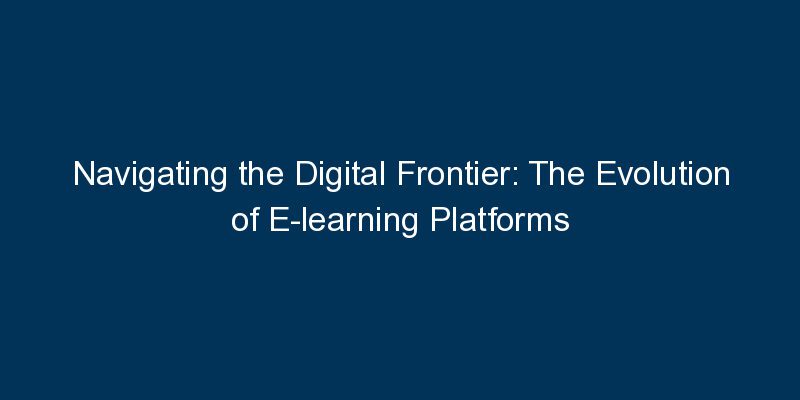In the ever-expanding landscape of education, e-learning platforms have undergone a remarkable evolution, transforming the way we acquire knowledge and skills. This blog delves into the dynamic journey of e-learning, exploring key milestones, technological innovations, and the future horizons that these platforms promise.
Introduction: The Digital Reshaping of Education
From Classrooms to Clicks
As traditional educational models faced challenges in accessibility and flexibility, e-learning emerged as a transformative solution. Over the years, e-learning platforms have evolved from static repositories of information to dynamic, interactive ecosystems that cater to diverse learning styles and preferences.
I. Early Days of E-learning: The Digital Classroom Dawn
From CD-ROMs to Online Portals
The roots of e-learning can be traced back to the era of CD-ROMs and early online platforms. These rudimentary systems laid the groundwork for digital education, allowing learners to access course materials and assessments remotely. However, the interactivity and engagement were limited compared to what modern platforms offer.
II. Rise of Learning Management Systems (LMS): Beyond Virtual Classrooms
Centralizing Learning Resources
The advent of Learning Management Systems marked a significant leap in e-learning. LMS platforms provided a centralized hub for course materials, assessments, and communication tools. Institutions and organizations adopted LMS to streamline content delivery and create cohesive online learning environments.
III. Gamification and Interactivity: Making Learning Fun
Leveling Up the Learning Experience
To enhance engagement, e-learning platforms incorporated gamification elements. Gamified courses leverage game mechanics to make learning interactive and enjoyable, incorporating rewards, badges, and progress tracking. This approach appeals to learners of all ages and keeps them motivated throughout their educational journey.
IV. Adaptive Learning Technologies: Tailoring Education to Individuals
Personalized Paths to Mastery
The evolution of e-learning introduced adaptive learning technologies, where AI algorithms analyze a learner’s performance and tailor the educational content accordingly. This personalized approach ensures that each learner progresses at their own pace, reinforcing understanding and addressing specific learning needs.
V. Massive Open Online Courses (MOOCs): Democratizing Education
Global Classrooms, Global Access
MOOCs emerged as a game-changer in e-learning, offering courses from top institutions to a global audience. These platforms provide accessible and often free educational resources, allowing learners to acquire new skills or pursue academic subjects regardless of geographical constraints.
VI. Virtual Reality (VR) and Augmented Reality (AR) in E-learning
Immersive Learning Environments
The integration of VR and AR technologies has brought a new dimension to e-learning. Virtual classrooms, simulations, and interactive 3D models create immersive learning experiences. This technology transcends geographical limitations, allowing learners to virtually explore historical sites, conduct scientific experiments, or engage in lifelike simulations.
VII. Social Learning Platforms: Connecting Learners Worldwide
Knowledge Sharing in a Connected World
Social learning platforms leverage the power of online communities to foster collaboration and knowledge sharing. Discussion forums, peer review features, and collaborative projects create a sense of community among learners, facilitating a richer educational experience.
Conclusion: E-learning’s Continued Ascent
As e-learning platforms evolve, the possibilities for accessible, flexible, and engaging education continue to expand. From the early days of digital classrooms to the immersive experiences offered by VR and AR, the journey of e-learning reflects a commitment to making education a dynamic and inclusive endeavor.



















Comments